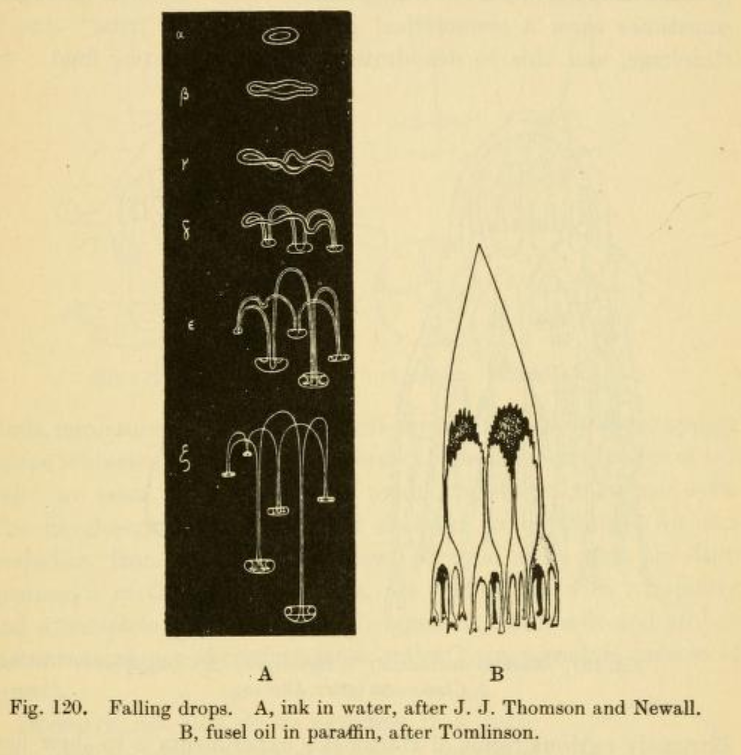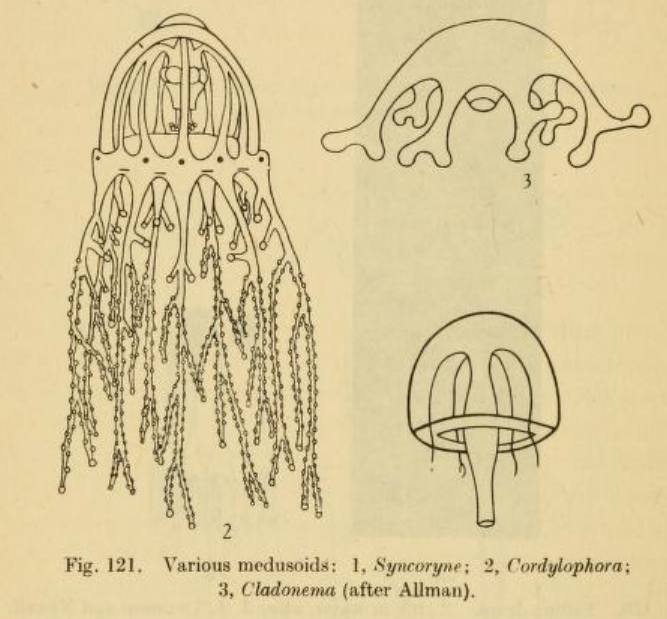D'Arcy Thompson and Mathematics
Alice Gowenlock and Indre Tuminauskaite
Correspondence about the Forms of Cells
About
In the 'Forms of Cells' chapter of On Growth and Form D'Arcy Thompson explains the effects of different forces (mostly surface tension) on the forms of cells.
He considers the similarity between the forms of small single cell organisms and Plateau's Surfaces of Revolution. Spheres, cylinders and unduloids are the most common surfaces of revolution that are seen in natural forms.
Plateau's experiment (and C. R. Darling's improvement on it) on soap-films play a vital part in this chapter. The experiment shows how a soap-bubble, spherical at the beginning, changes its shape depending on the conditions that it is in.
Furthermore, Thompson uses Worthington's observations from an experiment on splashes to compare the forms of the different phases of a splash to, for instance, a hydroid polyp (see Figure 1).
Similarly, he considers the liquid jets (created by a drop moving through surrounding fluid, influenced by fluid friction) and compares them to various medusoids (see Figures 2 and 3).

Original diagrams from On Growth and Form |

Original diagrams from On Growth and Form |

Original diagrams from On Growth and Form |
Correspondents and related material
About Joseph Plateau and his experiment
Charles Robert Darling
D'Arcy's test script for Tait's class